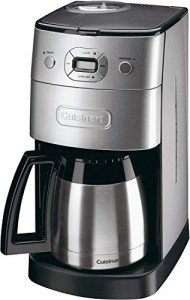A Comprehensive Guide to Espresso Machines: Types, Features, and FAQs
Espresso machines have actually ended up being a staple in coffee culture, mesmerizing both enthusiasts and casual drinkers alike. As the demand for high-quality coffee increases, understanding the variety of espresso machines readily available and their functions becomes essential. This article intends to offer an in-depth exploration of espresso machines, covering their types, performances, and what to consider when purchasing one.
Types of Espresso Machines
Espresso machines come in a number of styles, each with special functions, advantages, and compatibility with various developing approaches. Below, we talk about the primary types of espresso machines offered on the market:
| Type | Description | Target User |
|---|---|---|
| Handbook Espresso Machines | These need the user to physically run the machine, offering complete control over the brewing process. | Coffee purists and enthusiasts |
| Semi-Automatic Machines | These machines automate the water pressure but require manual input for brewing time. | Intermediate users |
| Completely Automatic Machines | These machines do whatever instantly, from grinding the beans to brewing the coffee. | Hectic professionals |
| Super-Automatic Machines | These machines are fully automated and can produce various coffee beverages with very little user intervention. | Users seeking benefit |
| Capsule Espresso Machines | These utilize pre-packaged coffee pills to streamline the brewing procedure. | Casual drinkers |
| Business Espresso Machines | Heavy-duty machines designed for high-volume use, usually discovered in cafes and dining establishments. | Coffee store owners and fanatics |
1. Manual Espresso Machines
Manual espresso machines use unmatched personalization for coffee fans who value the art of brewing. Users need to practice methods such as tamping and pump pressure to produce the best shot of espresso.
2. Semi-Automatic Machines
These machines strike a balance between user control and automation. They automate water flow however require the barista to manage the developing time. Semi-automatics are popular among home baristas who wish to sharpen their skills without the complexity of totally manual machines.
3. Completely Automatic Machines
Fully automatic machines remove much of the uncertainty associated with developing. They grind, dose, and extract espresso with one touch of a button, making them ideal for users who value speed and consistency.
4. Super-Automatic Machines
Super-automatic machines take benefit to the next level. They can prepare a remarkable array of drinks, from espresso to coffee, with little to no user input, making them perfect for hectic families or offices.
5. Pill Espresso Machines
Capsule machines, such as those from Nespresso or Keurig, use pre-packaged pods that simplify the developing process. While they provide benefit, the series of flavor and freshness might be restricted compared to entire coffee beans.
6. Commercial Espresso Machines
Created for heavy usage, commercial machines are built to produce high-quality espresso rapidly and consistently. They typically feature innovative innovation like multi-boiler systems and built-in grinders.
Functions to Consider When Choosing an Espresso Machine
When selecting an espresso machine, purchasers ought to think about a number of important factors, as these will considerably affect the general brewing experience and the quality of the coffee produced. Here are crucial functions to assess:
Boiler Type
- Single Boiler: Good for those who brew primarily espresso.
- Dual Boiler: Allows for developing espresso and steaming milk all at once.
- Heat Exchanger: Provides high pressure for espresso while enabling steaming.
Grinder
- Integrated Grinder: Offers benefit with built-in options for grinding coffee.
- Separate Grinder: Provides flexibility and the alternative to select the grinder best fit to your tastes.
Portafilter Size
- Standard: Usually 58mm, fits most machines and provides excellent extraction.
- Smaller Sizes: Often discovered in lower-end machines, which might impact taste.
Ease of Use
- User-Friendly Controls: Essential for novices or busy people.
- Modification Features: Important for enthusiasts who prefer hands-on brewing.
Cleaning up and Maintenance
- Detachable Parts: Facilitate easy cleaning.
- Automatic Cleaning Systems: Helpful for maintaining the machine's performance.
Size and Design
- Counter Space: Ensure the machine will fit in your kitchen area.
- Aesthetic Appeal: Consider the machine's general design to match your kitchen area design.
Frequently Asked Questions about Espresso Machines
What is the distinction between espresso and regular coffee?
Espresso is brewed by forcing warm water through finely-ground coffee under pressure, leading to a concentrated shot with an abundant taste and crema. Routine coffee is typically brewed using methods like drip or pour-over, which utilize larger coffee premises and produce a lighter flavor.
How do I maintain my espresso machine?
Regular upkeep involves descaling the machine, cleaning the portafilter and group head, clearing the drip tray, and replacing any water filters. Automatic machines often have integrated cleaning programs.
Can I use routine coffee beans in an espresso machine?
While you can technically use regular coffee beans, espresso is best made with beans specifically roasted for espresso. These beans are usually darker and more oily, offering the rich flavor and strong scent that espresso is understood for.
How can I enhance my espresso-making abilities?
Practice is essential! Try out different grinds, tamping strategies, and extraction times. Think about using a scale to determine coffee and water specifically. Viewing tutorials online can also offer insights into innovative methods.
What is the average price variety for an excellent espresso machine?
Prices can differ significantly based upon type and features. Fundamental manual machines begin around ₤ 100, while high-end super-automatic machines can cost over ₤ 2,000. Reliable Coffee Makers -automatic machines normally vary from ₤ 300 to ₤ 1,500.
Espresso machines provide a broad spectrum of choices, each accommodating different choices, experiences, and spending plans. Knowing the ranges readily available and the essential features can assist customers make informed choices that result in delicious, café-quality espresso in the comfort of their homes. Whether one seeks to indulge in abundant flavors or requires a hassle-free brewing service, an espresso machine can raise the coffee experience beyond the everyday cup.

